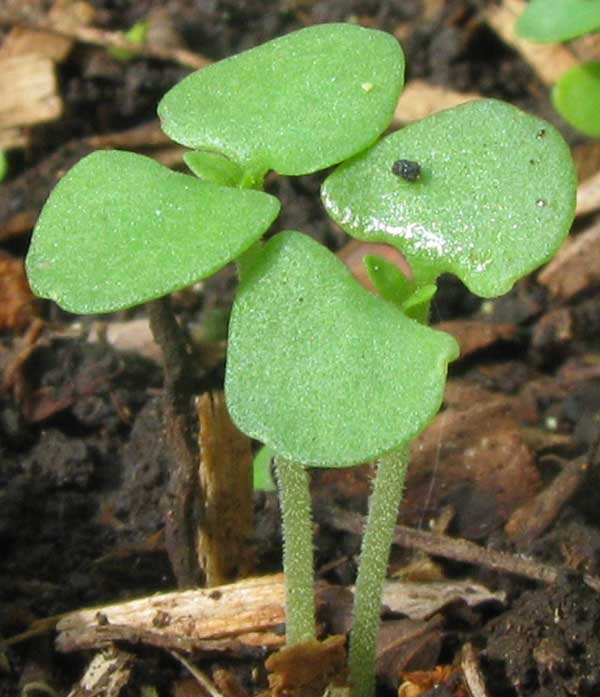
An Excerpt from Jim Conrad's
NATURALIST NEWSLETTER
May 9, 2010
issued from Hacienda Chichen Resort adjoining Chichén Itzá Ruins in YUCATÁN, MÉXICO

With the rainy season approaching I've sown some seeds, planning on some gardening. What a pleasure seeing seedlings emerge, such as those above.
Those are Basil seedlings grown from seeds collected from Don Filomeno's past-prime, dying-back plants. Like the tomato and hot-pepper seedlings grown from seedy leftovers in the kitchen, as soon as these seedlings broke the soil's surface they deployed two special leaves, their cotyledons. In most plants, including Basil, cotyledons are a little different in shape from future leaves.
Basically a flowering plant's cotyledons are solar collectors. Their job is to collect sunlight energy for fueling the magical photosynthesis process that produces carbohydrate, which is an energy source that can be stored in the plant's body. Once the cotyledons photosynthesize enough carbohydrate to fuel untold numbers of chemical processes, then the plant begins growing its stems, leaves, flowers and fruits.
Nature is offering profound wisdom here. Here's the teaching:
Here at the beginning of our rainy season suddenly the whole landscape has gone from scrubby brown and gray to lush, shadowy greenness. Wherever you look, burgeoning, irrepressibly sprouting, leafing-out greenness conveys the message: "Deploying solar collectors, deploying solar collectors... "
The above picture of the two Basil seedlings was taken just as the big oil spill in the Gulf of Mexico began moving onto the US coast.
How wise my little Basil seedlings are. How beautiful is their simple dedication to living sustainably, and leaving behind a world in at least as good a shape as they found it.